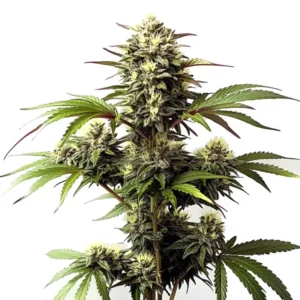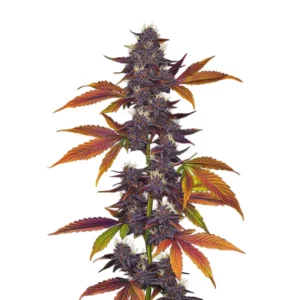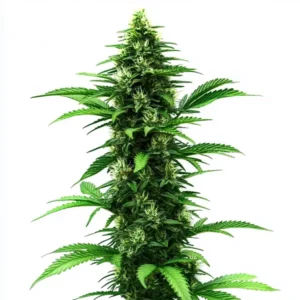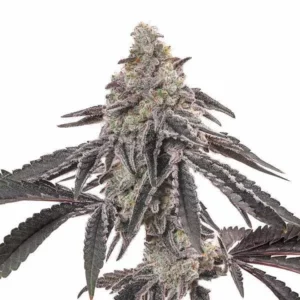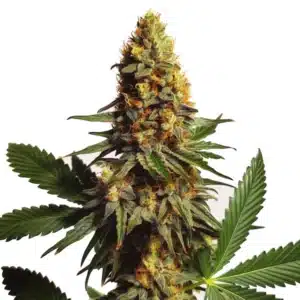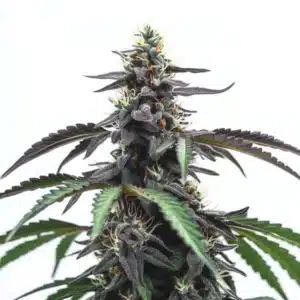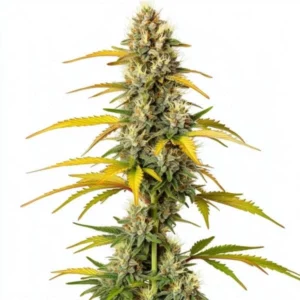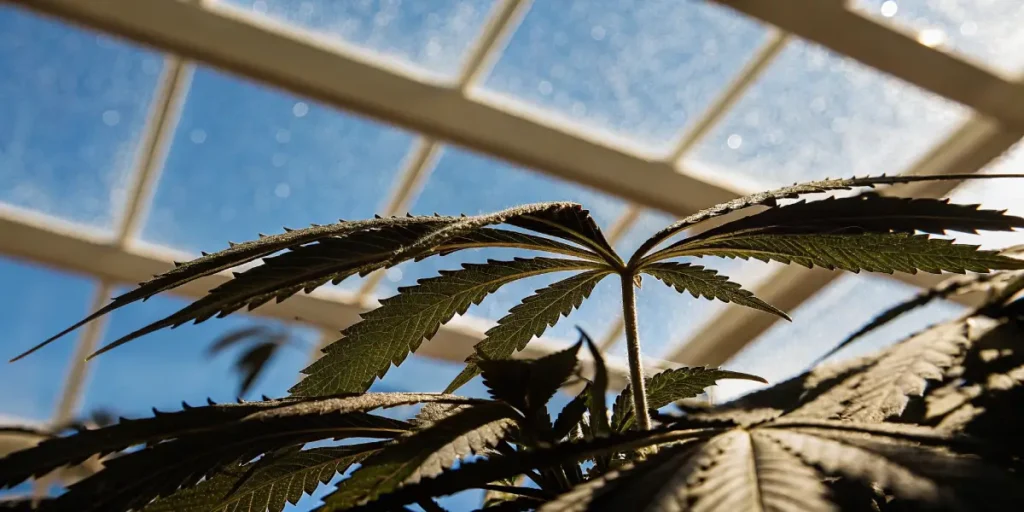
Cannabis Hormone Pathways
Cannabis hormone pathways are like the body’s communication system, helping the plant grow, flower, and respond to its environment. Think of hormones as tiny messengers that tell the plant what to do and when. These pathways are crucial for both the health and productivity of your cannabis plants.
Whether you’re a first-time grower or have been cultivating cannabis for years, knowing about cannabis hormone signaling mechanisms can dramatically improve your harvest. Ever noticed how some plants seem to thrive while others lag behind? Hormones could be the reason. They influence everything from seed germination to flowering time.
Recommended Strains
Alaskan Purple
-
THC: 15% - 20%
-
Type of seed: Feminized
-
Phenotype: 30% Sativa / 70% Indica
-
Flavor: Citrus, Earthy, Hashish, Sweet
-
Day to flower: 8 - 10 weeks
Auto Purple CBD
-
THC: 0.2% - 0.5%
-
Type of seed: Autoflowering
-
Phenotype: 30% Sativa / 70% Indica
-
Flavor: Citrus, Sweet
-
Life cycle of: 8 - 10 weeks
For instance, when you grow a strain like Purple Punch from Blimburn Seeds, knowing these pathways can help you optimize conditions. This knowledge can lead to a more robust plant and a higher yield. So, let’s dive into the world of cannabis hormones.
Types of Hormones in Cannabis
First up, auxins. These are the hormones responsible for the growth direction. Auxins make the plant’s cells elongate, guiding stems and roots to grow in specific directions. Imagine them as the GPS of the plant’s growth system. They ensure that your cannabis plant grows toward light, which is crucial for photosynthesis.
Then there’s gibberellins, another key player in cannabis plant hormone pathways. These hormones help in stem elongation, seed germination, and flowering. If you’re cultivating a strain like Bruce Banner 3, gibberellins can help you achieve that tall, mighty stature known for this strain.
Knowing the function of hormones in cannabis development is essential for optimizing plant growth. Different hormones interact in complex ways, and a balanced approach can lead to healthier, more productive plants. By adjusting hormone levels appropriately, growers can influence the plant’s overall architecture.
Moreover, the effects of hormones on cannabis growth are not limited to physical characteristics. Hormones also play a crucial role in the plant’s ability to cope with environmental stressors. By fine-tuning hormone levels, growers can enhance the plant’s resilience to changing conditions, ultimately leading to better yields.
Cytokinins and Their Effects
Next, let’s talk about cytokinins, which work in tandem with auxins. While auxins focus on elongation, cytokinins are all about cell division. These hormones can be your best friend when looking to promote bushier plants. They play a significant role in branching and can help you get a fuller plant.
Cytokinins also delay aging in leaves, keeping your plants vibrant and productive for longer periods. If you’re growing a strain like Gelato, cytokinins can help maintain that lush, healthy foliage that this strain is known for.
In cannabis hormone pathways, cytokinins have a synergistic relationship with other hormones, providing a balance that promotes optimal plant health. By encouraging cell division, cytokinins contribute to a plant’s ability to expand its canopy and maximize light absorption, which is crucial for robust growth.
Furthermore, the manipulation of cytokinins in cannabis plant hormone pathways can also enhance root development. A strong root system is vital for nutrient uptake and overall plant stability, making cytokinins an indispensable part of any grower’s toolkit when aiming for a thriving cannabis garden.
Ethylene’s Role in Cannabis
Ethylene is another hormone that plays a pivotal role in the life cycle of cannabis. It’s involved in the ripening of fruits and the shedding of leaves. But in cannabis, ethylene is crucial for flower development. If you’re growing a strain that’s known for large, dense buds, ethylene will be part of the reason why.
This hormone also helps the plant respond to stress, such as changes in light or temperature. For example, if you’re experimenting with light cycles to induce flowering, ethylene helps the plant adapt to these changes smoothly.
In the context of cannabis hormone pathways, ethylene serves as a signal for the plant to transition through different growth stages. It plays a critical role in triggering flower maturation, which is a key factor for growers aiming to maximize yield and potency.
Managing ethylene levels can be a delicate process, as it influences both positive and negative aspects of plant growth. By knowing the cannabis hormone signaling mechanisms, growers can better control ethylene production, ensuring plants reach their full potential without premature aging or stress-related issues.
Abscisic Acid and Stress Response
Abscisic acid, often abbreviated as ABA, is like the plant’s stress manager. It helps the plant conserve water during drought conditions and closes the plant’s stomata to reduce water loss. If you’re growing outdoors, this hormone can be crucial during dry spells.
ABA also signals seeds to remain dormant during unfavorable conditions. This ensures that seeds germinate only when conditions are ideal. For those storing seeds like Purple Punch for future use, knowing ABA can help maintain seed viability.
Abscisic acid is integral to the cannabis plant hormone pathways, as it regulates the plant’s stress response system. By signaling the plant to adjust its physiological processes, ABA helps maintain homeostasis during extreme weather conditions, ensuring survival and continued growth.
Besides to its role in water management, ABA is involved in the plant’s defense mechanisms against pathogens. Knowing the effects of hormones on cannabis growth, particularly ABA, allows growers to cultivate resilient plants that can withstand biotic and abiotic stressors while maintaining high productivity.
Promos & Deals
Research Studies on Cannabis Hormone Pathways
Recent cannabis hormone pathways research studies have shed light on how these tiny messengers influence plant development. Scientists have discovered that manipulating hormone levels can enhance certain desirable traits like yield and potency.
For example, studies have looked into increasing gibberellins to boost stem growth or adjusting auxins for better root development. These insights are invaluable for growers looking to optimize their growing techniques and improve their harvests.
The ongoing research into cannabis hormone pathways continues to uncover new ways to enhance plant health and productivity. By exploring the dynamic interactions between different hormones, scientists are developing innovative strategies to improve cultivation practices.
These cannabis hormone pathways research studies are crucial for advancing the industry, providing growers with evidence-based methods to enhance crop quality. As more discoveries are made, growers can expect to see improved techniques for manipulating hormone levels to achieve superior results.
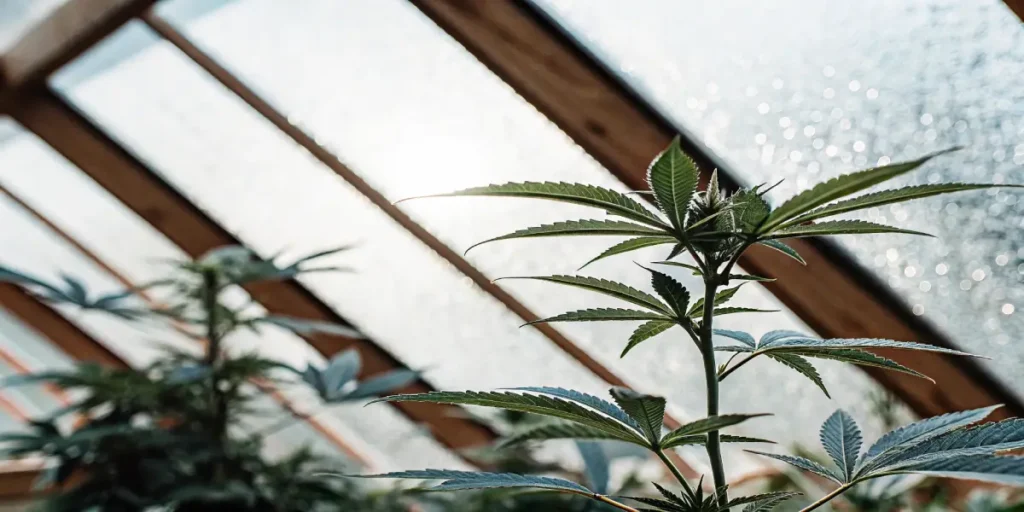
Practical Applications for Growers
So, how can you apply this information? Let’s break it down into practical steps. First, consider the strain you’re growing. Strains like Bruce Banner may benefit from different hormone management strategies than a strain like Gelato.
Next, think about your growing environment. Are you indoors or outdoors? Is your climate humid or dry? Hormones like abscisic acid can make a big difference in water management. Tailoring your approach to your specific conditions can help you make the most of these hormone pathways.
Knowing cannabis hormone signaling mechanisms is key to applying these insights effectively. By observing your plants and noting their responses to different conditions, you can adjust your cultivation techniques to enhance growth and yield.
Experimentation is vital in mastering cannabis hormone pathways. Keeping detailed records of your growing practices and outcomes allows you to refine your approach over time, leading to more consistent and successful harvests.
FAQs on Cannabis Hormone Pathways
How do hormones affect cannabis plant growth?
Hormones act as messengers that tell the plant how to grow and respond to its environment. Auxins guide growth direction, gibberellins promote stem elongation, and cytokinins encourage cell division. These hormones work together to ensure the plant grows optimally.
The effects of hormones on cannabis growth are significant. They influence everything from the plant’s height and branching to flowering time and bud development. By managing hormone levels, growers can optimize conditions for better yields and healthier plants.
Hormones are integral to cannabis plant hormone pathways, shaping the plant’s physiological and morphological characteristics. By knowing how these hormones interact, growers can tailor their cultivation practices to enhance specific traits.
Through careful manipulation of hormone levels, growers can influence the plant’s growth patterns, ensuring that resources are allocated efficiently for optimal development. This knowing is crucial for achieving high-quality, high-yield cannabis crops.
What are cannabis hormone signaling mechanisms?
Cannabis hormone signaling mechanisms refer to how hormones communicate within the plant. These signals are crucial for coordinating growth and development, ensuring that the plant responds appropriately to environmental cues.
Hormone signaling can be influenced by external factors like light, temperature, and water availability. By knowing these mechanisms, growers can better control their growing environment to enhance plant health and productivity.
The function of hormones in cannabis development is multifaceted, as these chemical signals coordinate various growth processes. By deciphering the cannabis hormone signaling mechanisms, researchers are developing new strategies to optimize plant growth.
These insights into hormone signaling provide growers with the tools to manipulate plant responses to environmental changes, ultimately leading to more resilient and productive cannabis plants.
How can I manipulate hormone levels for better yields?
Manipulating hormone levels involves adjusting environmental conditions or using specific products to influence plant growth. For example, increasing light exposure can boost auxin levels, promoting upward growth.
Growers can also use foliar sprays to apply hormones like cytokinins directly to the plant. This can encourage bushier growth and more flowering sites, potentially increasing overall yield.
Manipulating cannabis plant hormone pathways requires a nuanced approach, as each hormone plays a distinct role in growth and development. By knowing the interactions between hormones, growers can create tailored strategies to enhance yields.
Experimenting with different hormone applications allows growers to determine the most effective methods for their specific strains and growing conditions, leading to more abundant and potent harvests.
Are there risks in altering cannabis hormone pathways?
Altering cannabis hormone pathways can have unintended consequences if not done carefully. Overstimulating certain hormones can lead to undesirable traits, such as excessive height or premature aging.
It’s important to experiment cautiously and monitor plants closely for signs of stress or imbalance. Keeping detailed records can help you fine-tune your approach and avoid potential pitfalls.
While the benefits of manipulating cannabis hormone pathways are significant, growers must be mindful of the potential risks. Hormone imbalances can lead to reduced plant vigor and compromised health.
By taking a careful and informed approach, growers can minimize these risks, ensuring that their efforts to enhance growth through hormone manipulation result in positive outcomes.
What strains are best for exploring hormone pathways?
Strains like Purple Punch, Bruce Banner 3, and Gelato from Blimburn Seeds are excellent choices for exploring cannabis hormone pathways. Each has unique characteristics that can be enhanced through careful hormone management.
These strains are known for their robust growth and high yields, making them ideal for both novice and experienced growers interested in experimenting with hormonal influences.
When selecting strains for exploring cannabis hormone pathways, consider those with distinct growth patterns and responses to environmental conditions. Strains that are known for vigorous growth and resilience are excellent candidates for hormone experimentation.
By focusing on strains with well-documented characteristics, growers can more effectively study the effects of hormones on cannabis growth, leading to valuable insights and improved cultivation techniques.

